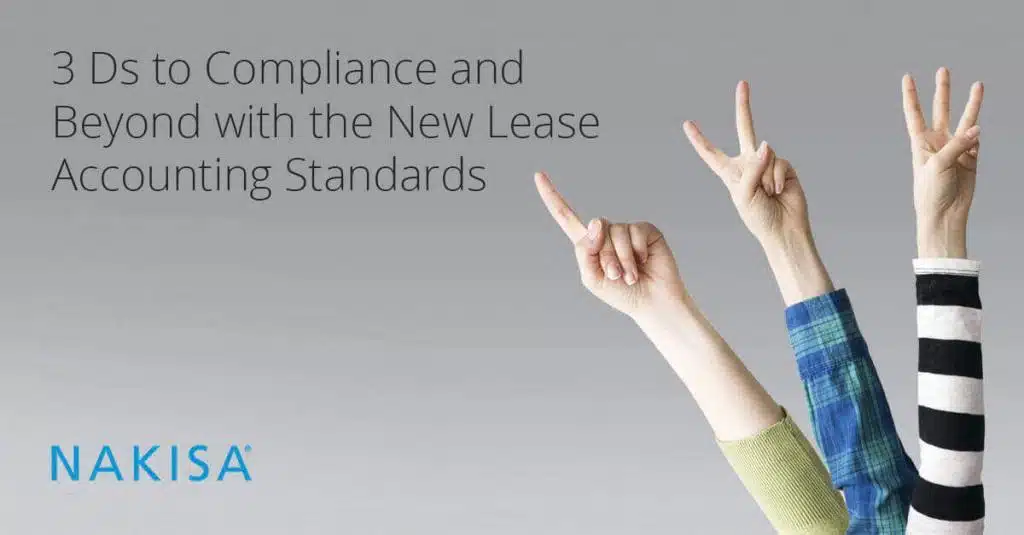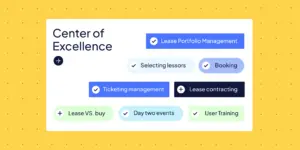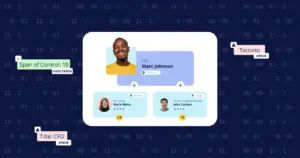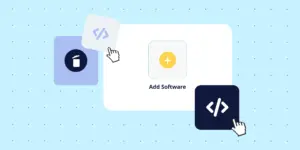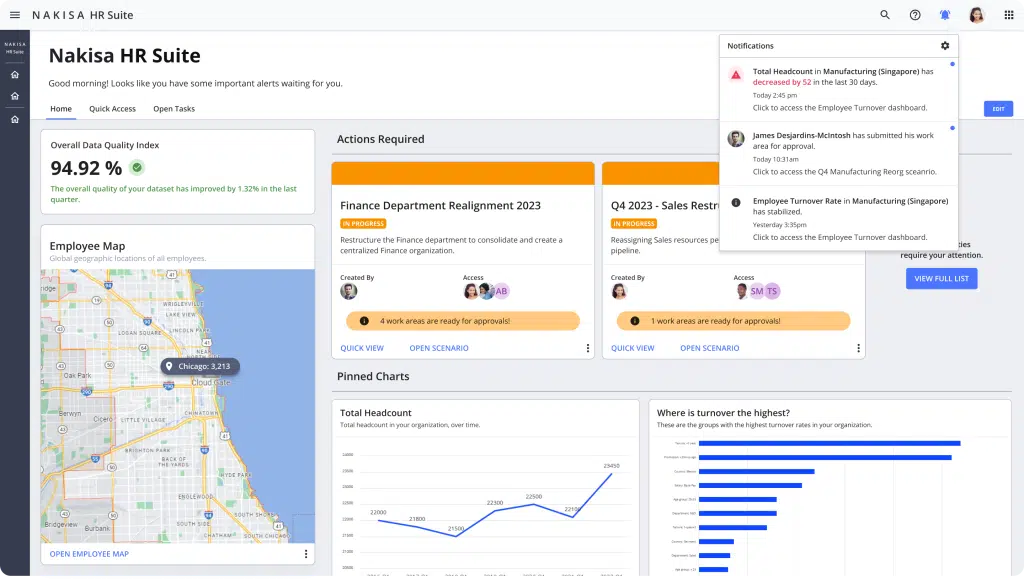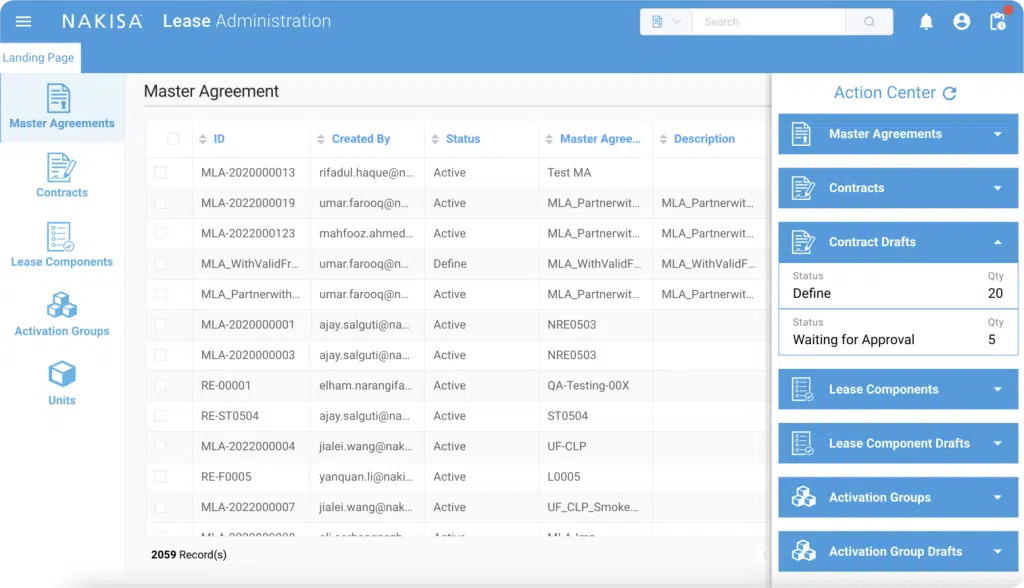This blog was co-authored by Protiviti.
The clock is ticking as organizations get set to meet the requirements of new lease accounting standards. Issued in February 2016, FASB Accounting Standards Codification (ASC) Topic 842, requires lessees to report assets and liabilities related to leases of one year or more, on the balance sheet. The new lease standard takes effect starting December 2018 for public companies and a year later for non-public companies. Additionally, IFRS 16 goes into effect on January 1, 2019. So in a recent webinar, we shared the three things organizations should do on the journey to becoming compliant with these new standards.
1. Discovery: Get the lease data right
This is an important area we often see organizations struggling to resolve. Many clients have a good data repository, but the question always arises: “How do we know the leases in the repository are all the leases to be considered?” This may sound like a challenge with a quick fix, but it is not. Getting data in the right repository and validating the proper accounting is in place are two critical steps that can determine the success of the project. Along with that comes the knowledge needed to understand the new compliance standards. Risk and compliance teams are dependent on having the right skills and resources.
When considering the transition process, organizations must allocate enough time to get lease data in order. Before anything else, they must take a step back to ask, “How does this new regulation impact my business and decision making?” Remember, the rules have changed. Begin gathering leases early on and recognize this is not a siloed initiative. The departments driving the initiative are generally accounting and IT, supported by legal, procurement, and internal audit teams. Why? Accounting is the ultimate owner and it’s a system-related implementation, so IT will be a critical partner. Procurement and legal are involved in lease contracts and agreements, while internal audit has a bearing on changes to risks and controls. Throughout the project, be mindful of expected changes in the business and where those changes might impact the nature of lease instruments.
2. Design: Perform an end-to-end solution design (but don’t overengineer)
Getting the right requirements and design is paramount but keep an eye on the timing. Organizations should be careful to not underestimate the amount and length of time it takes to get things done. Lease identification, consolidation/upload and configuration require an appropriate focus on user enablement and sustainability through proper controls and ownership. We often find these are exactly the things that organizations often do not prioritize or, in some cases, overlook completely. The variables most likely to impact a timeline range from technical issues to requirements gathering and harmonization to testing and training.
The solution design should consider implementation variables that drive the success of the implementation. We recommend leveraging project accelerators including design documents (data gathering strategy, setup checklists, implementation guides), templates for data upload, comprehensive test plans, effective end user training material and identification of a future state report library.
Finally, organizations should keep in mind that communication is also a critical success factor. Keep stakeholders and affected users involved in communication when identifying key changes and new functionality. Effective communication and collaboration at every step of the process ultimately saves time for everyone.
3. Data: It’s Not the Technology, It’s the Data
While selecting the right lease administration tool is an important decision in the process, the success of the tool is predicated upon having the right data. We believe that a data quality is a critical part of the project. After all, the inputs will be reflected in the quality of outputs from the system. So, the big picture is really going to be about ensuring the data is right, accurate and complete.
SAP Lease Administration by Nakisa® provides full lease lifecycle management. The solution acts as a central repository for all leases and enables companies to perform end-to-end lease management, provides scalability and consistency, and reduces the risk of penalties due to noncompliance. The solution provides a global view of lease data and associated impact on financial statements and supports statutory lease reporting.
Our webinar reviewed the five steps in the go-live process to achieving compliance:
- Data abstraction
- Gather all the information needed to go live
- Lease determination
- A decision matrix available in the SAP Lease Administration by Nakisa solution helps determine if contract is a lease or contains a lease
- Lease T&C and Initial Recognition
- Once the lease determination is completed and all terms entered, SAP Lease Administration by Nakisa assesses the lease, guiding the end user to select terms and conditions likely to be exercised based on the lease life cycle
- Based on the terms selected, SAP Lease Administration by Nakisa calculates the present value of minimum lease payments, which is used to capitalize right-of-use assets and generate initial accounting treatment in SAP
- Amortization, Accruals and Event Management
- Payment information is transmitted to SAP, enabling timely lease payments
- Manage lease events such as early terminations, a casualty or new/updated terms and conditions
- Reporting
- This is the most critical step to achieve compliance. SAP Lease Administration by Nakisa provides the full set of quantitative disclosure reports required in order to be compliant. Management reports are also available, and other Business Intelligence (BI) / Analytics reports can be generated by other BI tools using data in SAP Lease Administration by Nakisa.
Organizations required to go live with multiple accounting standards at once, such as IFRS-16 and ASC-842, can leverage SAP Lease Administration by Nakisa’s parallel ledger functionality in order to simultaneously track, post and report based on both standards.
With SAP Lease Administration by Nakisa, the value is in recognizing that compliance is not just the end goal. The solution helps organizations create new sustainable lease processes that will help to achieve process efficiencies and obtain better insights to make business decisions related to leases.
Want to learn more about Protiviti and SAP Lease Administration by Nakisa? Download this white paper.
Payal Shah
Associate Director, Technology Consulting, Protiviti
Zeina Dabbagh
Technical Accountant, Nakisa

